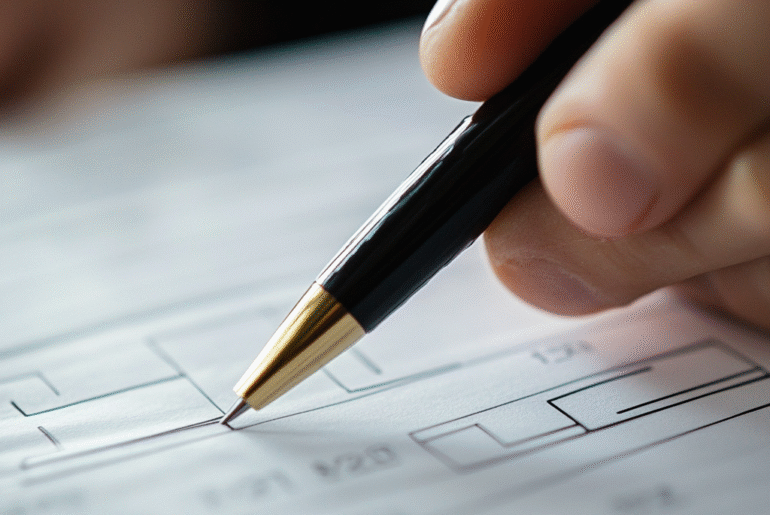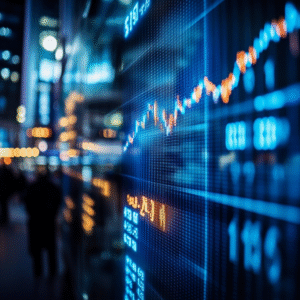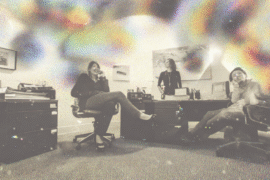This article may contain references to products or services from one or more of our advertisers or partners. We may receive compensation when you click on links to those products or services. Nonetheless, our opinions are our own.
The information presented in this article is accurate to the best of our knowledge at the time of publication. However, information is subject to change, and no guarantees are made about the continued accuracy or completeness of this content after its publication date.
Have you considered the various methods people use to make payments and conduct business? The two-party check is one of these tools. It’s a common but often misunderstood tool. Knowing how it works can make you feel more sure of yourself when dealing with personal finances, whether you’re splitting bills or making sure you get important payments.
We will explain what a two-party check is, how it works, and when you should use one. By the end, you’ll know a lot about this way to pay and how it affects your daily money decisions.
The Basics of a Two-Party Check
A two-party check is a financial document involving the payer, who issues the check, and the payee, who receives the funds. Both parties must endorse the check for it to be processed. This endorsement requirement adds an extra layer of protection, making it more difficult for the check to be misused.
Points to Know
- Endorsement: Both parties must sign the back of the check. The payee signs to accept the payment, and the payer may endorse it to authorize the transfer.
- Deposit Rules: Banks may require that the check be deposited into an account held jointly by both parties or the named payee only.
- Processing Time: Two-party checks can take longer to clear due to the verification process for both signatures.
How it Works in Real Life
Using a two-party check is relatively straightforward. Suppose you need to pay someone for a service but prefer not to use cash. You can issue a check with the recipient’s name listed on the “Pay to the Order of” line. This makes the payment official and traceable.
Common Process
- Fill in the check details, including the date and payment amount.
- Write the payee’s name clearly on the front.
- Sign the check.
- Ensure both parties endorse the back before cashing or depositing.
Example Scenarios
| Scenario | Payer | Payee | Purpose |
|---|---|---|---|
| Rent Payment | You | Landlord | Monthly housing payment |
| Service Payment | You | Freelancer | Payment for a completed project |
These real-world applications make two-party checks ideal for situations where accountability and proof of payment are important.
Benefits of Using a Two-Party Check
Using a two-party check comes with several advantages, especially when transparency and trust are critical.
Major Benefits
- Security: Both parties must endorse the check, minimizing unauthorized use.
- Control: You maintain oversight of the payment, as both parties must agree to proceed.
- Record-Keeping: A paper trail is automatically created, making it easier to track transactions.
| Advantage | Benefit |
|---|---|
| Security | Prevents unauthorized access to funds |
| Trust | Ensures mutual agreement |
| Documentation | Provides proof of payment and agreement |
Voted "Best Overall Budgeting App" by Forbes and WSJ
Monarch Money helps you budget, track spending, set goals, and plan your financial future—all in one app.
Get 50% OFF your first year with code MONARCHVIP
Common Situations for Using a Two-Party Check
There are several real-life situations where a two-party check is especially helpful:
- Personal Sales: Selling a high-value item like a vehicle or electronics.
- Property Rentals: Making deposits or rent payments that require dual acknowledgment.
- Shared Expenses: Splitting bills during vacations or group outings.
- Child Support or Alimony: Ensures proper routing of court-ordered payments.
These situations benefit from the added documentation and verification that a two-party check provides.
Tips for Safely Handling a Two-Party Check
To avoid issues, follow these best practices when using or cashing a two-party check:
Safety Tips
- Verify Endorsements: Ensure all required parties sign the back of the check.
- Use a Joint Account: If possible, deposit the check into an account both parties can access.
- Keep Records: Note the date, amount, and names on each transaction.
| Tip | Description |
|---|---|
| Check Endorsements | All payees must sign the back |
| Use Joint Accounts | Simplifies cashing or depositing the check |
| Keep a Record | Helps in case of disputes or tax documentation |
When to Consider Alternatives
While two-party checks are useful, there are instances where other payment methods may be better.
Use Alternatives When
- Speed Is Important: Electronic payments process faster.
- Security Is a Concern: Bank transfers offer encrypted, traceable transactions.
- Distance Is a Factor: Payment apps and wire transfers are more efficient for remote transactions.
| Method | Speed | Security Level | Typical Fees |
|---|---|---|---|
| Bank Transfer | 1–2 business days | High | Moderate |
| Payment App | Instant | Moderate–High | Low–Medium |
| Wire Transfer | Same day | High | Higher |
Conclusion
Two-party checks are a safe and useful way to keep track of personal transactions that need to be accountable. This way of paying makes sure that both parties are safe and know all the details of the transaction, whether you’re splitting rent, paying for freelance work, or closing a personal sale. However, electronic payment options may be better in situations that need speed or extra security.
Knowing how two-party checks work and when to use or not use them gives you the power to make smart, safe financial choices.
Frequently Asked Questions
Can a two-party check be cashed by one person?
Usually not. Most banks require both parties to endorse the check. Some banks may allow one person to cash it if the check is made out using “or” (e.g., John or Jane Doe), but policies vary.
What happens if one payee refuses to sign a two-party check?
If one party doesn’t sign, the bank may reject the check. In such cases, the issuer might need to cancel and reissue the check or use a different payment method.
Do two-party checks expire?
Yes. Most checks expire within 6 months (180 days), although some banks may honor them past that window. Always cash or deposit checks promptly.
Can a two-party check be mobile deposited?
Sometimes. Some banks allow mobile deposit for two-party checks, but both signatures must be visible and the bank’s mobile app must support it. Check your bank’s policies before attempting this.
Is a joint account required for depositing a two-party check?
Not always, but having a joint account makes the process smoother. Without a joint account, some banks may reject the deposit unless both payees are present.

Reviewed and edited by Albert Fang.
See a typo or want to suggest an edit/revision to the content? Use the contact us form to provide feedback.
At FangWallet, we value editorial integrity and open collaboration in curating quality content for readers to enjoy. Much appreciated for the assist.
Did you like our article and find it insightful? We encourage sharing the article link with family and friends to benefit as well - better yet, sharing on social media. Thank you for the support! 🍉
Article Title: What Is a Two-Party Check?
https://fangwallet.com/2025/07/30/what-is-a-two-party-check/The FangWallet Promise
FangWallet is an editorially independent resource - founded on breaking down challenging financial concepts for anyone to understand since 2014. While we adhere to editorial integrity, note that this post may contain references to products from our partners.
The FangWallet promise is always to have your best interest in mind and be transparent and honest about the financial picture.
Become an Insider

Subscribe to get a free daily budget planner printable to help get your money on track!
Make passive money the right way. No spam.
Editorial Disclaimer: The editorial content on this page is not provided by any of the companies mentioned. The opinions expressed here are the author's alone.
The content of this website is for informational purposes only and does not represent investment advice, or an offer or solicitation to buy or sell any security, investment, or product. Investors are encouraged to do their own due diligence, and, if necessary, consult professional advising before making any investment decisions. Investing involves a high degree of risk, and financial losses may occur including the potential loss of principal.
Source Citation References:
+ Inspo
There are no additional citations or references to note for this article at this time.












































